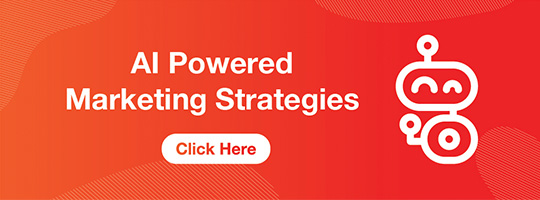In the last few years, generative AI has exploded onto the scene, revolutionizing industries from entertainment to finance, and everything in between. As companies and individuals race to harness the power of this transformative technology, a new challenge has emerged: there are now so many generative AI platforms available that choosing the right one has become a daunting task. The abundance of options has created a paradox of choice, leaving users overwhelmed as they navigate a landscape filled with platforms that promise to generate text, images, code, music, and more.
The Proliferation of Generative AI Platforms
The rise of generative AI can be traced back to the success of models like OpenAI’s GPT-3 and DALL-E, which showcased the immense creative potential of AI. These breakthroughs spurred a wave of innovation, with numerous companies developing their own platforms to capitalize on the growing demand. Today, the market is flooded with generative AI tools, each offering a unique spin on the technology.
Among the most well-known platforms are OpenAI’s GPT series, Google’s Bard, Midjourney, and Microsoft’s Copilot. These platforms cater to a broad range of needs, from content creation and software development to customer service and marketing. But the list doesn’t end there. Smaller players like Jasper, Copy.ai, and Writesonic have also entered the fray, each touting their specialized capabilities and user-friendly interfaces. And that’s just the tip of the iceberg—there are platforms focused on specific niches, such as Soundraw for music composition, Artbreeder for image creation, and Codex for coding assistance.
A Platform for Every Need
The variety of generative AI platforms reflects the versatility of the technology itself. Different platforms excel at different tasks, and understanding these nuances is key to making an informed choice.
Text Generation: OpenAI’s GPT-4 remains the gold standard for generating human-like text, with applications ranging from chatbots to creative writing. Jasper and Copy.ai, on the other hand, are tailored for marketing professionals, offering features like ad copy generation, blog post creation, and social media content. These platforms come equipped with templates and optimization tools that help users craft compelling, SEO-friendly content in a fraction of the time it would take manually.
Image Creation: DALL-E and Midjourney are among the most popular platforms for AI-generated images. DALL-E’s ability to create detailed and surreal imagery based on textual descriptions has captivated artists and marketers alike. Midjourney, known for its artistic style, is particularly favored by designers and creatives who want to experiment with AI-driven art. These platforms are not just for professionals—anyone can use them to bring their ideas to life visually, making them accessible to a broad audience.
Code Generation: For developers, platforms like GitHub Copilot and OpenAI’s Codex have become indispensable tools. Copilot, integrated into popular IDEs, helps developers write code faster by suggesting snippets and autocompleting functions based on context. Codex goes a step further by generating entire scripts or programs based on natural language prompts, making it a powerful tool for both seasoned programmers and beginners looking to learn the ropes.
Music and Audio: Generative AI has also made inroads into the music industry, with platforms like Soundraw and Amper Music allowing users to create custom soundtracks. These tools are especially valuable for content creators who need royalty-free music tailored to their specific needs. Users can control elements like tempo, mood, and instrumentation, ensuring that the AI-generated music aligns perfectly with their project.
The Paradox of Choice
While the diversity of generative AI platforms is a testament to the technology’s potential, it also presents a significant challenge. With so many options available, users often find themselves paralyzed by choice, unsure of which platform will best meet their needs. This paradox of choice is compounded by the rapid pace of innovation—new platforms are constantly being launched, and existing ones are frequently updated with new features.
For businesses, the decision-making process can be even more complex. Factors like cost, scalability, integration capabilities, and data privacy concerns all play a role in selecting the right generative AI platform. A small startup might gravitate towards a platform like Writesonic for its affordability and ease of use, while a large enterprise might opt for a more robust solution like GPT-4, which offers extensive customization options and enterprise-grade security.
Moreover, the competitive nature of the generative AI market means that platforms are constantly evolving, adding new features and capabilities in a bid to outdo their rivals. This can make it difficult for users to keep up with the latest developments and ensure they’re getting the most out of their chosen platform.
The Risks of Fragmentation
The abundance of generative AI platforms also raises concerns about fragmentation. As different industries and user groups gravitate towards specific platforms, there’s a risk that the AI landscape could become increasingly siloed. This could lead to compatibility issues, where content or code generated on one platform doesn’t work seamlessly with another, creating inefficiencies and barriers to collaboration.
Furthermore, the rapid proliferation of platforms could dilute the quality of generative AI output. As more companies rush to develop their own tools, the focus may shift from innovation to commercialization, leading to a flood of mediocre products that fail to live up to the hype. Users may find themselves sifting through a sea of subpar platforms, struggling to identify the few that truly deliver on their promises.
Navigating the Generative AI Landscape
So, how can users navigate this crowded landscape and make informed decisions about which generative AI platform to use? The key lies in understanding your specific needs and goals.
For individual users and small businesses, it’s important to start by identifying the core tasks you want the AI to perform. Are you looking to generate marketing content, create art, or write code? Once you’ve established your priorities, you can narrow down the options to platforms that specialize in those areas.
For larger organizations, the decision-making process should involve a thorough evaluation of each platform’s capabilities, scalability, and integration with existing systems. It’s also crucial to consider the long-term viability of the platform—does it have a strong track record of innovation? Is it backed by a reputable company? Will it continue to evolve to meet your needs in the future?
Finally, don’t be afraid to experiment. Many generative AI platforms offer free trials or limited-access versions that allow you to test their features before committing. By trying out a few different options, you can get a better sense of which platform aligns best with your workflow and creative vision.
The Future of Generative AI
As the generative AI market continues to expand, the abundance of platforms will likely increase. While this presents challenges, it also opens up exciting possibilities for innovation and creativity. In the end, the key to navigating this crowded field is to stay informed, be clear about your objectives, and remain open to experimentation. By doing so, you can harness the power of generative AI to unlock new levels of productivity and creativity, no matter which platform you choose.










Comments are closed.